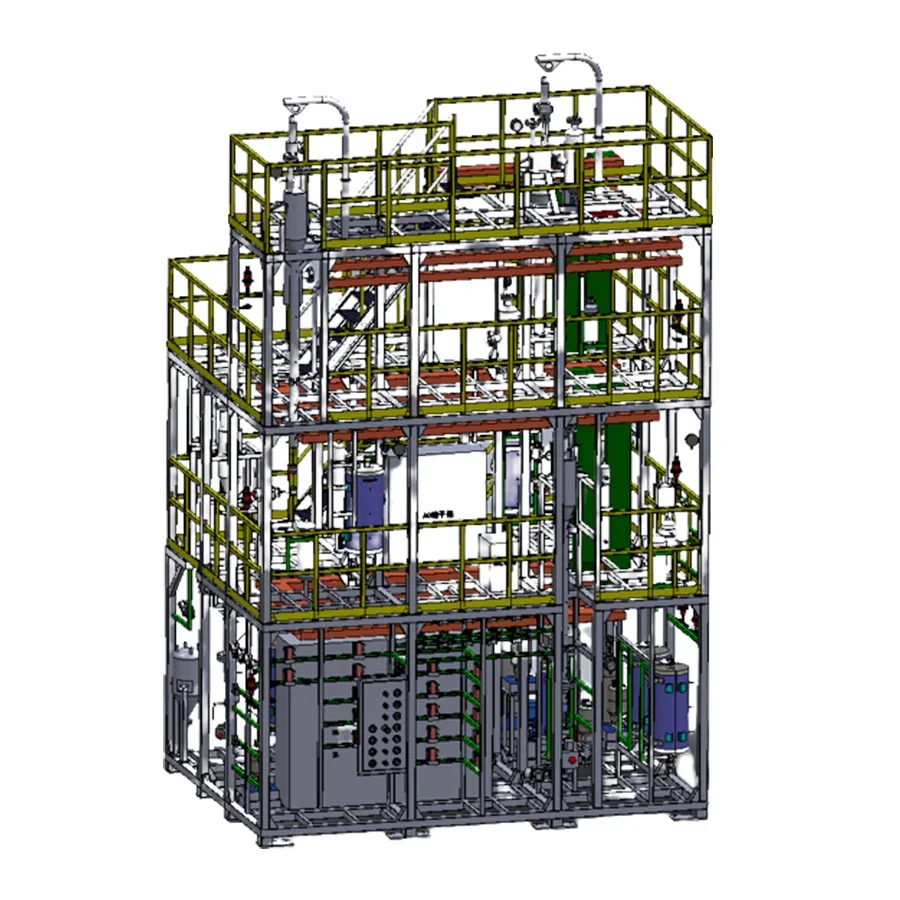Industrial fixed-bed production units play a crucial role in various manufacturing processes across industries. These units are designed to provide a stable and efficient platform for carrying out chemical reactions, catalyst regeneration, and gas-solid separations. In this article, we will explore the key aspects of industrial fixed-bed production units, including their design principles, operational considerations, and diverse applications.
Design Principles of Industrial Fixed-Bed Production Units
Bed Configuration:
Packed Bed Design: Discuss the arrangement of solid particles within the bed and the importance of proper packing techniques.
Catalyst Selection: Highlight the significance of selecting the appropriate catalyst for specific reactions and the impact on unit performance.
Reactor Design:
Reactor Geometry: Explain the different types of reactor geometries commonly used in fixed-bed units, such as cylindrical, annular, and radial flow reactors.
Heat Transfer Considerations: Discuss the importance of efficient heat transfer mechanisms within the reactor to maintain optimal reaction conditions.
Fluid Dynamics:
Flow Distribution: Explain the challenges associated with achieving uniform flow distribution across the bed and the methods employed to overcome them.
Pressure Drop: Discuss the factors influencing pressure drop in fixed-bed units and their impact on reactor performance.

Operational Considerations for Industrial Fixed-Bed Production Units
Start-up and Shutdown Procedures:
Preheating and Catalyst Activation: Describe the steps involved in preparing the unit for operation, including catalyst activation and temperature ramp-up.
Catalyst Regeneration: Discuss the methods employed to regenerate spent catalysts and extend their lifespan.
Reaction Control:
Temperature Control: Explain the importance of maintaining precise temperature control within the reactor and the strategies used to achieve it.
Residence Time Control: Discuss the significance of controlling the residence time of reactants within the bed and its impact on product quality.
Catalyst Management:
Catalyst Loading and Unloading: Describe the procedures involved in loading fresh catalysts into the bed and removing spent catalysts.
Catalyst Deactivation: Highlight the factors leading to catalyst deactivation and the strategies employed to mitigate its effects.

Applications of Industrial Fixed-Bed Production Units
Petrochemical Industry:
Hydrocracking: Discuss the use of fixed-bed units in the production of high-quality fuels by breaking down heavy hydrocarbons.
Catalytic Reforming: Explain how fixed-bed units are employed to convert low-octane naphtha into high-octane gasoline.
Chemical Industry:
Ammonia Synthesis: Describe the role of fixed-bed units in the production of ammonia, a key ingredient in fertilizers and various chemical processes.
Methanol Production: Discuss the use of fixed-bed reactors in the synthesis of methanol, a versatile chemical used in various industries.
Environmental Applications:
Flue Gas Desulfurization: Explain how fixed-bed units are utilized to remove sulfur compounds from flue gases emitted by power plants.
Volatile Organic Compound (VOC) Abatement: Discuss the role of fixed-bed units in the treatment of VOC emissions from industrial processes.
Conclusion
Industrial fixed-bed production units are essential tools in the manufacturing sector, enabling efficient and controlled chemical reactions, catalyst regeneration, and gas-solid separations. Understanding the design principles, operational considerations, and diverse applications of these units is crucial for optimizing their performance and achieving desired outcomes in various industries.